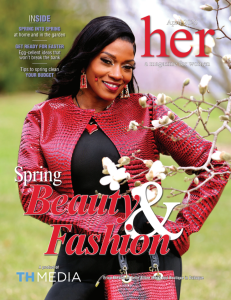With summer just around the corner, it is a great time to go over the basics of safe sunscreen use. Sunscreen, sun protection factor 30 or higher, is recommended daily, 365 days per year. It’s not just for fun-in-the-sun days and it is recommended for everyone, no matter what skin tone. Not wearing sunscreen increases skin aging, dark spots, uneven complexion, and of course, the possibility of skin cancer.
As it turns out, not all sun protectants are created equal. In fact, some can be outright dangerous. Let’s talk about the details.
There are two types of sunscreen: chemical and physical. Chemical sunscreen, typically a thin and translucent product, allows penetration of the sun’s ultra violet rays into the skin. It relies on the active chemicals to convert the harmful rays into heat then releases them from the body. Physical sunscreen, also known as sunblock, is an opaque, white-tinted product that sits on the skin and reflects the sun’s rays without allowing absorption into the skin.
Chemical sunscreens tend to have a lighter nongreasy feel after application, whereas physical SPF tends to feel heavier and might leave a white cast on the skin. That’s the strongest selling point for chemical sunscreens, but there are potential risks of chemical sunscreens that should be considered when choosing your next sun protection product.
The sun emits two main types of damaging radiation, UVA and UVB rays. UVA rays penetrate the deepest layers of skin and cause common signs of aging, like fine lines and wrinkles. UVB rays mainly affect the top layer of the skin and causes sunburns. So, look for a “broad spectrum” sunscreen, this means it protects against both UVA and UVB rays.
Here are the facts about chemical sunscreens:
A 2020 study from the FDA showed that ingredients commonly found in most chemical sunscreens — oxybenzone, octinoxate, octisalate, octocrylene, homosalate and avobenzone — were found to be absorbed into the bloodstream after a single application. (Of special interest to new mothers: If it’s in the bloodstream, it is also in breast milk). These chemicals are considered hormone disruptors.
Hormone disruptors can affect how estrogen and other hormones act in the body which throw off the body’s hormonal balance, such as elevated estrogen levels in males and females. High estrogen levels have been associated with hormone receptor-positive breast cancer, so many people choose to limit their exposure to these dangerous chemicals. Furthermore, studies have shown that oxybenzone might affect female breast development, infant birth weight and adolescent males’ sperm function.
In 2019, the federal Food and Drug Administration — the agency that governs sunscreen safety — found only two ingredients could be classified as safe and effective: zinc oxide and titanium dioxide. Both are physical sunscreens.
While enjoying being outdoors, you can decrease your risk of skin cancer by using a broad-spectrum mineral sunscreen. Protect yourself by staying in the shade, especially from the hours of 10 a.m. to 4 p.m., when the sun’s UV rays are the strongest.
Wear protective clothing and a hat that provides ultraviolet protection factor. UPF indicates how much UV radiation (both UVB and UVA) a fabric allows to reach your skin. For example, a UPF 50 fabric blocks 98 percent of the sun’s rays and allows two percent (1/50th) to penetrate, thus reducing your exposure risk significantly. Finally, apply and re-apply a broad-spectrum sunscreen with SPF 15 or higher.
Rebekah Bell is a licensed medical esthetician with Statera Integrated Health & Wellness Solutions in Dubuque.













